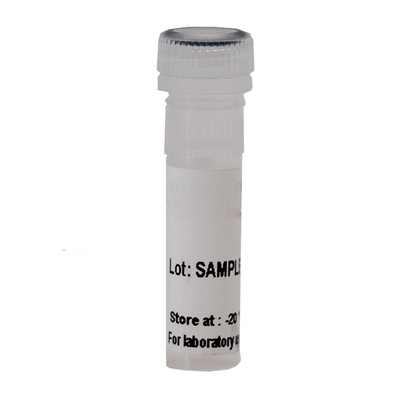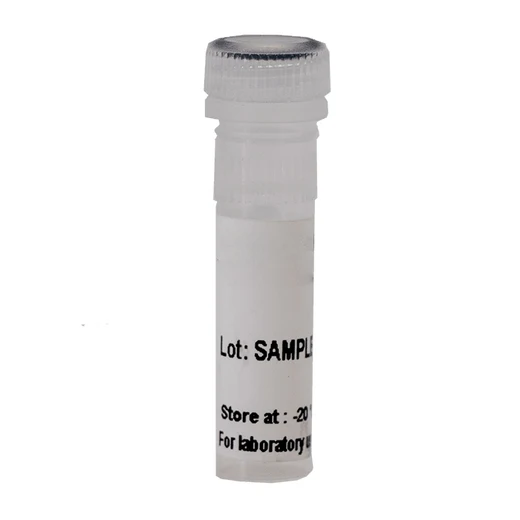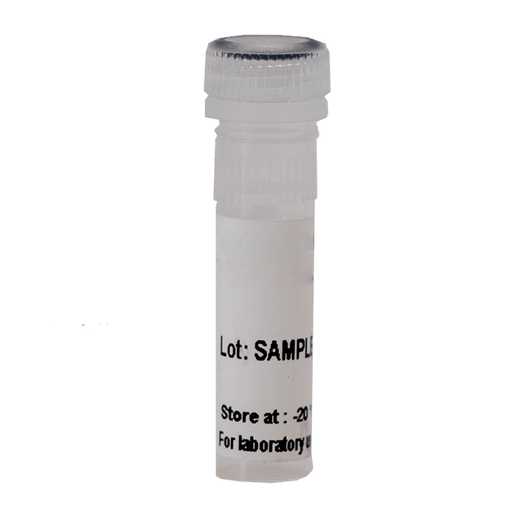
DELFIA Tb-DTPA-ITC Chelate and Terbium (Tb) Standard, 1mg

DELFIA Tb-DTPA-ITC Chelate and Terbium (Tb) Standard, 1mg




Terbium labeling chelate for creating your own Terbium-labeled biomolecules for use in DELFIA time-resolved fluorescence (TRF) assays. The ITC-activated chelate reacts with free amino groups, such as lysines. The DTPA chelate is more-stable than the N1 chelate.
For research use only. Not for use in diagnostic procedures. All products to be used in accordance with applicable laws and regulations including without limitation, consumption and disposal requirements under European REACH regulations (EC 1907/2006).
| Feature | Specification |
|---|---|
| Application | Labeling |
Terbium labeling chelate for creating your own Terbium-labeled biomolecules for use in DELFIA time-resolved fluorescence (TRF) assays. The ITC-activated chelate reacts with free amino groups, such as lysines. The DTPA chelate is more-stable than the N1 chelate.
For research use only. Not for use in diagnostic procedures. All products to be used in accordance with applicable laws and regulations including without limitation, consumption and disposal requirements under European REACH regulations (EC 1907/2006).


DELFIA Tb-DTPA-ITC Chelate and Terbium (Tb) Standard, 1mg


DELFIA Tb-DTPA-ITC Chelate and Terbium (Tb) Standard, 1mg


Product information
Overview
DELFIA® Tb-DTPA ITC Chelate is optimized for the terbium labeling of proteins and peptides for use in dissociation-enhanced time resolved fluorometric assays, where especially high chelate stability is required. It is recommended for assays where chelate has to be stable in in vivo conditions (e.g. pharmacokinetics) or assays where high concentrations of competing chelating agents may be present. The isothiocyanato group reacts with free amino groups on the proteins and peptides, forming stable, covalent thiourea bond.
The DTPA-chelates can be used in DELFIA® separation assays where: the concentration of chelating agents is <10 mM, pH>6.5, and the assay temperature is <70°C. They can stand 2 to 3 mmol EDTA when pH is 7.5 or higher. The enhancement time using a DELFIA® shaker is 25 minutes. Isothiocyanate (ITC) activated chelates, react primarily with free lysines on the compound to be labeled.
DELFIA® (dissociation-enhanced lanthanide fluorescence immunoassay) is a time-resolved fluorescence (TRF) intensity technology. Assays are designed to detect the presence of a compound or biomolecule using lanthanide chelate labeled reagents, separating unbound reagent using wash steps. DELFIA assays are flexible, compatible with a variety of plate readers, and, as this is a wash-based technology, compatible with most sample types. The technology is based on fluorescence of lanthanide chelates (Europium, Samarium, and Terbium). The fluorescence decay time of these lanthanide chelate labels is much longer than traditional fluorophores, allowing efficient use of temporal resolution for reduction of autofluorescent background. The large Stokes’ shift (difference between excitation and emission wavelengths) and the narrow emission peaks contribute to increasing signal-to-noise ratio. Sensitivity is further increased because of the dissociation-enhancement principle: the lanthanide chelate is dissociated and a new highly fluorescent chelate is formed into a protective micellar solution. DELFIA lanthanide chelates require this dissociation/enhancement step for fluorescence (induced by addition of DELFIA Enhancement solution, DELFIA Inducer, and DELFIA Enhancer as appropriate to the particular lanthanide chelate).
Specifications
| Application |
Labeling
|
|---|---|
| Automation Compatible |
Yes
|
| Brand |
DELFIA
|
| Detection Modality |
DELFIA
|
| Fluorophore |
Tb-DTPA-ITC
|
| Product Group |
Fluorescent Reagent
|
| Shipping Conditions |
Shipped in Blue Ice
|
| Technology |
TRF
|
| Unit Size |
1 mg
|
Resources
Are you looking for resources, click on the resource type to explore further.
DELFIA immunoassays are a superior alternative to traditional ELISAs
This guide provides an introduction to the DELFIA method, and to the labeling procedures involved.


How can we help you?
We are here to answer your questions.






























